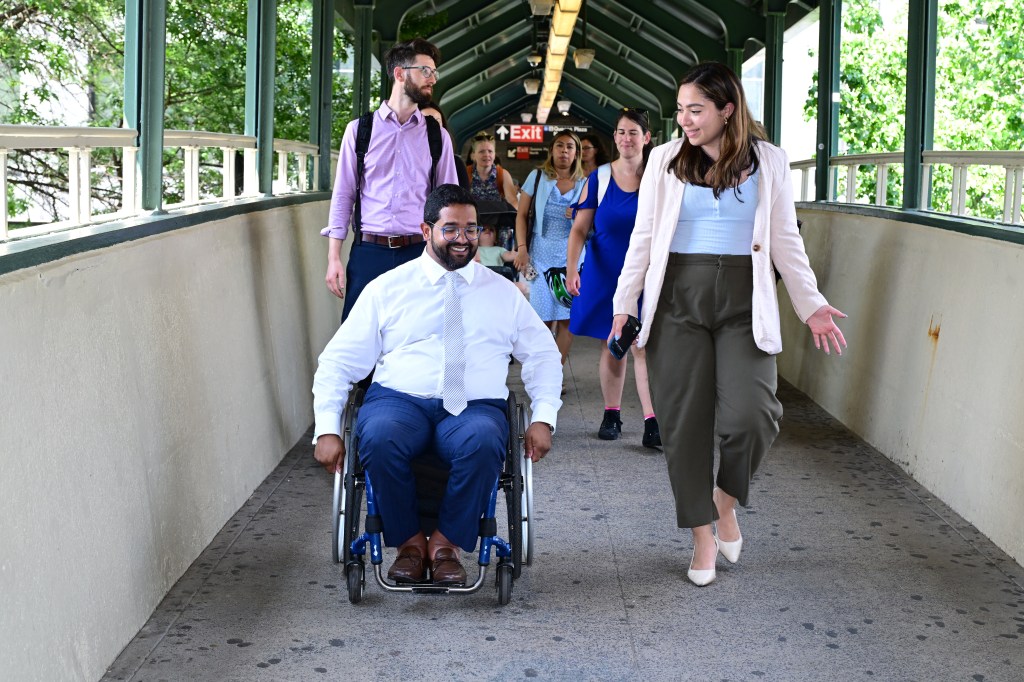By Bob Harris
At the 55th Annual Scholarship Awards Breakfast in the Electrical Industry Center in Flushing 47 students were presented with scholarships. These high school seniors, as well as one college student, have excelled in school and are children of members of the International Brotherhood of Electrical Workers, Local 3.
The money comes from the Educational and Cultural Trust Fund of the Electrical Industry, which includes Local 3 and electrical contractors. The students had an SAT average of 1,344 and a mean school average of 96.2. Three recipients received an 800 on at least one part of the SAT and one student had a perfect score of 1,600.
The Electrical Industry’s investment in the youth of our nation is similar to that of the United Federation of Teachers, my union, which annually presents 300 New York City high school graduates, from every public high school, with a four-year $1,000 annual scholarship based on academic work and financial need. This money comes from the UFT Welfare Fund and was negotiated decades ago by the teachers.
Assemblyman Brian McLaughlin (D-Flushing), who is a president of the New York City Labor Council and business representative of Local 3, was the guest speaker. McLaughlin said labor-management harmony made these awards possible, and the Electrical Industry has given away $15 million in scholarships.
He was proud of the minds the scholarships are helping to develop. He also said big business has the best minds money can buy but uses them to hurt workers.
I have been invited to these breakfasts due to my position as a member of Community Board 8, in which the Electrical Industry Center and Electchester is located. McLaughlin has been a member of CB 8. I met the following students who attend Queens schools. One or more of their parents are members of Local 3.
Roselle Vitforinao attends the Edward J. Clearie School and lives in Astoria. She is on the math team and is a math volunteer. She has taken part in the Election Simulation in her school.
Gemma Kamin-Korn attends Cardozo High School and lives in Hollis Hills. She is in Arista and is on the tennis team.
Annette Kosiorowski attends St. Francis Prep High School and lives in Middle Village. She is the editor of her school newspaper, mentors freshmen, is on the speech and debate team, is a tutor, helps in the drug and alcohol program and volunteers at PS 4.
Katie Kirch attends Cardozo High School and lives in Glendale. She is a member of Arista and the school performing dance group.
Ryan Coyle is a student at St. John’s Universty and attended Cathedral Prep High School. He plays varsity baseball, is on the track team and is an alter server in his church.
Sitting at the table with me was my wife, Edna, who came to the breakfast for the first time, and Anna and Ed Sawchuck. Anna is on CB 8 and has been president of the Jamaica Hills Community Association, which is several blocks from St. John’s University and just west of Jamaica High School and Thomas A. Edison Vocational & Technical High School. We share civic concerns.
Sitting next to me was Janis Graham, a journeyman electrician from Local 3 who works at 90 Church St. in Manhattan at a building that was damaged when the World Trade Center fell. She said she has been an electrician for seven years, and she told me the story of how she got started in this field.
Graham graduated from Prospect Heights High School and worked in an office for a few years; however, she became restless and joined the apprenticeship program of the Electrical Industry. Graham said she loves her job and decided to come to the breakfast. This is very interesting because several decades ago, like the above students, she would not have had the chances they all have.
It is amazing how the pharmaceutical industry has created so many medicines that can heal illnesses and keep people alive for decades. One has to marvel at the research, production and distribution techniques the companies have used. They deserve a fair return on their investments. Although the medicines are relatively inexpensive, considering the wonderful cures they produce, the costs are still too high for many people.
Too many senior citizens or even average working families can’t afford the costs of the medicines that can keep them healthy and alive. Some seniors have to choose among food, rent and medicines. This is a national shame considering who and what we are in the world. I am lucky because the UFT has negotiated a good welfare fund for its members and retirees.
Senior citizens have discovered that they can buy medicines, often the same ones sold in their corner pharmacy, at 60 percent less in Canada by going there or ordering by mail.
An article in the CARP April 2003 Bulletin tells about the manufacturer GlaxoSmithKline, which is trying to cut off the supply of its medicines to Canadian mail-order pharmacies. This is bad since Glaxo made a profit of about $10 last year. Why does the average person have to fight so hard just to stay alive?



































